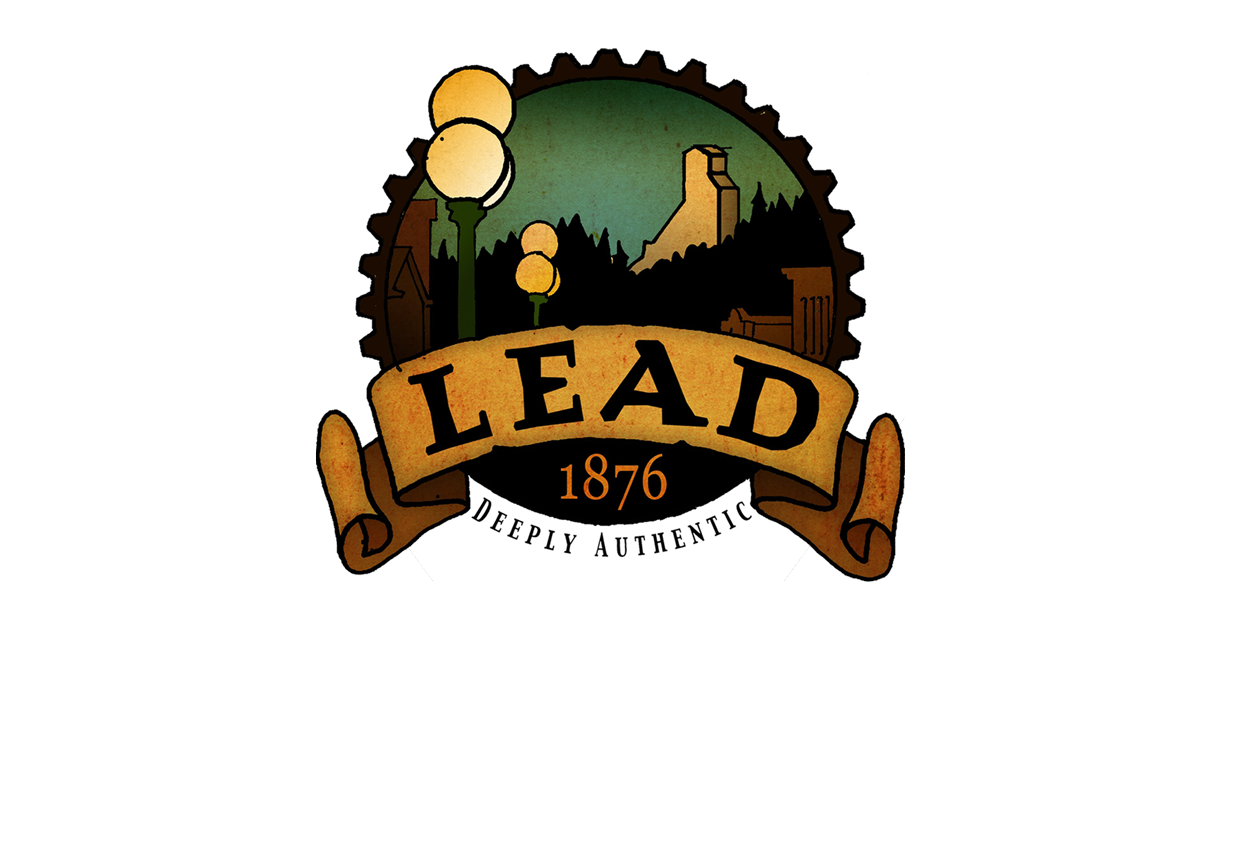Featured Properties
Follow a self-guided tour through Lead. Pick up a brochure at any of the public locations throughout town or download the Historic Walking Tour Brochure.
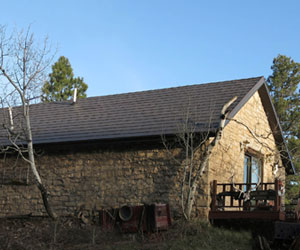
1. Homestake Powder House
403 Hearst Avenue
Located along the Black Hills and Fort Pierre Railroad grade, this powder house was used as a transfer point for incoming explosives for the Homestake Mine. It has been modified into a private residence.
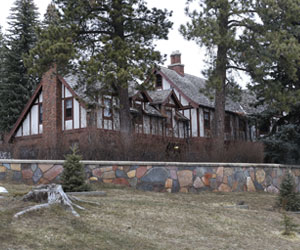
2. Homestake Mansion
108 Fairview Ave
The English Tudor-style Homestake Mansion was completed in 1933 and was the third home constructed by the company for its superintendents. The 1880 residence had to be demolished due to its location in the Open Cut area and the 1896 residence was removed due to subsidence. While in use, the mansion was the site of lavish social entertaining, featuring formal gardens and a green house. In 1979, the Homestake manager decided to not move into the mansion. It became used for conference and an education center and fine lodging. It is now privately owned.
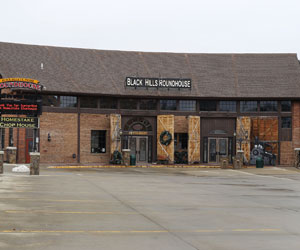
3. Black Hills & Fort Pierre Roundhouse
106 Glendale Drive
The Homestake Mining Company built this railroad structure in 1881 at the top of Lead years before the railroads would hit the Black Hills. The railroad entered Lead from the southwest and traversed the hillside toward the Open Cut, serving the many mills of the area with wood for boilers and construction. The roundhouse was constructed in 1900. Originally a narrow gauge railroad, the BH&FP was purchased by the Chicago, Burlington and Quincy Railroad in 1901. The CB&Q added a third rail to Deadwood and railroad service was available into Lead. Recently restored to business use, the BH&FP RR Roundhouse is the last remaining railroad structure in Lead.
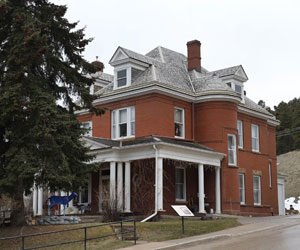
4. Glover House
11 Glendale Drive
The Glover House, located near the top of Lead’s Main Street, was the home of George Washington Glover for many years. It had been built for him by his mother Mary Baker Eddy, founder of the Christian Science Church. Mr. Glover, who had mining interests in the area (Glover Gold Mining Company), had originally filed on this land in 1888 and his mother presented this red brick house to him on Christmas, 1899. It remains a private home.

5. Masonic Temple
809 West Main Street
In 1932 a new Masonic Temple was constructed on Main Street. The Stearns Rogers Construction Company of Denver was selected as the contractor. This new temple would replace the old Masonic Temple which had been condemned due to subsidence. The new temple utilized much of the original material from the old temple, particularly the interior trim. The new temple had a dining/ball room, lodge quarters, a mezzanine balcony and a library.
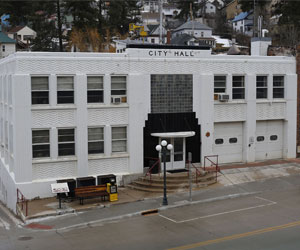
6. Lead City Hall
801 West Main Street
Lead’s City Hall was constructed in 1937 as a Works Progress Administration (WPA) project. The art-deco style building was built on the site of the Alert Hose Company #3 Hose House. The new building allowed the city to consolidate the various city offices, a courtroom and the fire department under one roof. Across the street a sign denotes the elevation at this location “One Mile High” – 5,280 Feet Above Sea Level.
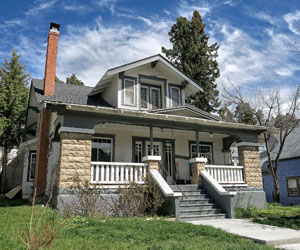
7. 614 West Main Street
614 West Main Street
Constructed in 1903, this house was the home of Charles Windolph, the last living soldier, serving under Captain Benteen, to see the Little Big Horn/Greasy Grass Battlefield after the battle between Crazy Horse and Sitting Bull and General Custer. Windolph was awarded the Medal of Honor and the Purple Heart for his actions. Windolph worked for the Homestake Mining Company from 1892 until 1936. Windolph passed away in 1950. The home is privately owned.
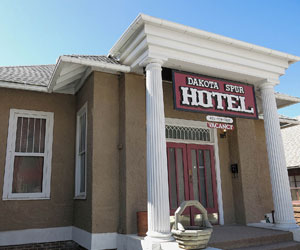
8. Christian Science Church site
509 West Main Street
The Christian Science Society of Lead was organized in 1899. Land for this church building was acquired in 1917 and the structure was constructed in the 1920s. It was vacated in the 1970s. Mary Baker Eddy, the founder of the Christian Science Church, constructed a home in Lead, the Glover House, which is viewable today at the upper end of Main Street.
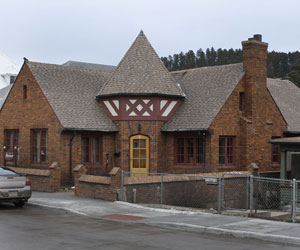
9. Revell House
515 West Main Street
This brick structure was originally the home and office of Dr. and Mrs. A. L. Revell. Dr. Revell practiced dentistry for many years in the City of Lead. Today the building is privately owned.
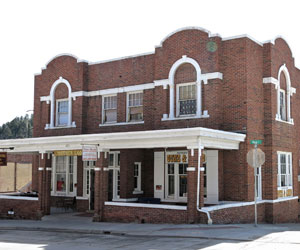
10. Highland Hotel / Motherlode
425 West Main Street
Constructed in 1928 and sponsored by the Community Hotel Company, the 40-room hotel was designed by Buettler and Arnold, architects, of Sioux City, Iowa. The facility included an attractive lobby, lounging rooms, ladies parlor, social room and coffee shop. Currently, several businesses are located on the main floor and apartments exist throughout the rest of the building.
.
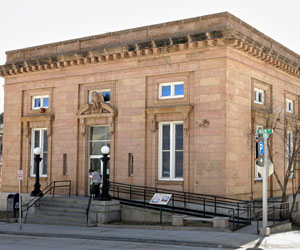
11. Historic Post Office
329 West Main Street
This Post Office was completed in 1912 by Mullen and Rourke Contractors at a cost of $80,000. The building was constructed of Hot Springs sandstone on a foundation of brick and Vermont granite.
.
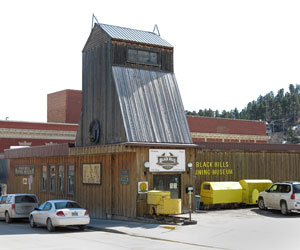
12. Black Hills Mining Museum
323 West Main Street
The Black Hills Mining Museum offers visitors a unique and fascinating look at Black Hills mining. Focusing on Homestake Mining Company history and artifacts, this museum houses many single issue items representing the many years of gold mining. A 45-minute guided tour takes the visitor “underground” to a mining level to observe developments in underground mining over the last century. The main floor has a video theater and a wide variety of displays of mining, geology and local history.
.

13. Hearst Free Library
315 West Main Street
The original Hearst Free Library and Reading Rooms were presented as a gift to the citizens of Lead on Christmas Day, 1894 from Phoebe Apperson Hearst, noted philanthropist and wife of California Senator George Hearst, one of the Homestake Mine’s original owners. Following the Opera House fire in 1984, the library was moved into its current building. Of special interest are the extensive SD collection, the early-day foreign language collection and the Custer-Cartwright papers, dealing with the Battle of Little Big Horn. The facility also houses the George Hearst Research Room and the T.J. Grier Archival Vaults, home to an extensive collection of Lead and Homestake Mining Company documents.
.
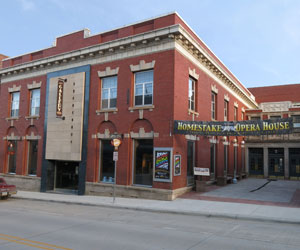
14. Homestake Opera House
313 West Main Street
Recognizing the need of miners’ families for entertainment, the Homestake Mining Company constructed this $250,000 building between 1912-1914 that included an opera house with a seating capacity of 1,000, a bowling alley, swimming pool, library, social hall and billiard room. The restoration of the interior of the theater is currently underway while tours and more than 50 concerts, theatre, presentations and community events are hosted year-round.
.
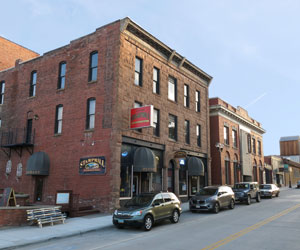
15. Halloran block / stampmill restaurant
305 West Main Street
This structure was designed by Lead architect J.A. Archibald, and was sufficiently completed by December 1897 for Nick Hovart’s new restaurant named The English-French Kitchen. Over the years many different businesses have occupied the block, including Thompson’s Drugstore and various saloons.
.
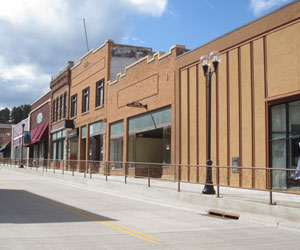
16. Maleta Block / finola building
306 West Main Street
This block of buildings was constructed in 1910 and has housed numerous businesses, at one time to include, Black Hills Studios, Levinson Jewelry, Callahan Jewelry and Dunn’s Drugstore, with dentists Fehlman and Grant upstairs.
.
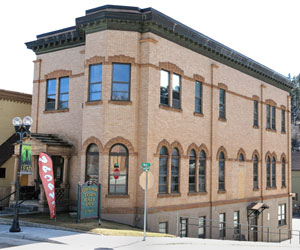
17. Old City hall / historic town inn
215 West Main Street
This building was constructed in 1912-1913 as the Lead City Hall. Designed by architect George Morthland and Lead City Engineer, L.D. Lea, the sandstone and brick structure was completed at a cost of $25,080. In 1938, the city relocated City Hall to its present location further west on Main Street. The Homestake Mining Company took possession of the building for its General Office in 1942. It remained the General Office until the mid-1990s when Homestake consolidated its operations to the Engineering Office near the Yates Shaft.
.
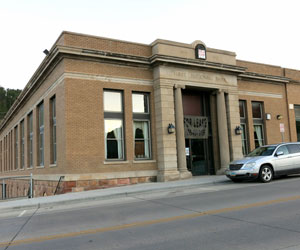
18. First National Bank BUilding
201 West Main Street
Originally the location of the First National Bank, this bank building was constructed in 1923 on the foundation of the old 1892 Miners Union Hall and Opera House, The Wells Fargo Bank was the recent bank tenant of this building, vacating it in 2016. It is now privately owned.
.

19. Finnish lutheran church
170 West Main Street
The members of the Finnish Evangelical Lutheran Church of the Black Hills purchased a lot on East Main Street in Lead in July, 1889 and built this church building, which was completed in 1891 at a cost of $911. It served the First Lutheran Church congregation from 1891 to 1962 when a new church was constructed. The Women’s Club of Lead purchased the old church for an art memorial and had the building moved to a location near the Open Cut. It was moved to its present site in 1993.
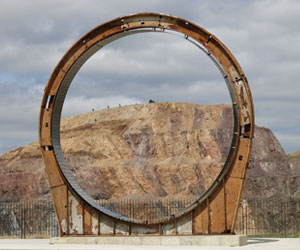
20. manuel bros park / homestake open cut
160 West Main Street
Brothers Moses & Fred Manuel discovered the Homestake deposit in 1876 with Hank Harney and sold the claim to George Hearst in 1877. The Homestake Gold Mine became one of the largest underground gold mines in the history of North America and one of the deepest in the world. Initially, the Open Cut was the result of the surface workings of the miners. Then, underground mining directly beneath the Open Cut created surface subsidence. The last mining venture in the Open Cut began in the mid-1980s and finished in 1998. The Sanford Lab Homestake Visitor Center documents the history of the Homestake Gold Mine as it has become an international Science laboratory.

CONTACT
Lead Historic Preservation
Lead City Hall
801 W Main St
Lead, SD 57754
(605) 581-1401
